Chrysler 2010 Annual Report Download - page 202
Download and view the complete annual report
Please find page 202 of the 2010 Chrysler annual report below. You can navigate through the pages in the report by either clicking on the pages listed below, or by using the keyword search tool below to find specific information within the annual report.-
 1
1 -
 2
2 -
 3
3 -
 4
4 -
 5
5 -
 6
6 -
 7
7 -
 8
8 -
 9
9 -
 10
10 -
 11
11 -
 12
12 -
 13
13 -
 14
14 -
 15
15 -
 16
16 -
 17
17 -
 18
18 -
 19
19 -
 20
20 -
 21
21 -
 22
22 -
 23
23 -
 24
24 -
 25
25 -
 26
26 -
 27
27 -
 28
28 -
 29
29 -
 30
30 -
 31
31 -
 32
32 -
 33
33 -
 34
34 -
 35
35 -
 36
36 -
 37
37 -
 38
38 -
 39
39 -
 40
40 -
 41
41 -
 42
42 -
 43
43 -
 44
44 -
 45
45 -
 46
46 -
 47
47 -
 48
48 -
 49
49 -
 50
50 -
 51
51 -
 52
52 -
 53
53 -
 54
54 -
 55
55 -
 56
56 -
 57
57 -
 58
58 -
 59
59 -
 60
60 -
 61
61 -
 62
62 -
 63
63 -
 64
64 -
 65
65 -
 66
66 -
 67
67 -
 68
68 -
 69
69 -
 70
70 -
 71
71 -
 72
72 -
 73
73 -
 74
74 -
 75
75 -
 76
76 -
 77
77 -
 78
78 -
 79
79 -
 80
80 -
 81
81 -
 82
82 -
 83
83 -
 84
84 -
 85
85 -
 86
86 -
 87
87 -
 88
88 -
 89
89 -
 90
90 -
 91
91 -
 92
92 -
 93
93 -
 94
94 -
 95
95 -
 96
96 -
 97
97 -
 98
98 -
 99
99 -
 100
100 -
 101
101 -
 102
102 -
 103
103 -
 104
104 -
 105
105 -
 106
106 -
 107
107 -
 108
108 -
 109
109 -
 110
110 -
 111
111 -
 112
112 -
 113
113 -
 114
114 -
 115
115 -
 116
116 -
 117
117 -
 118
118 -
 119
119 -
 120
120 -
 121
121 -
 122
122 -
 123
123 -
 124
124 -
 125
125 -
 126
126 -
 127
127 -
 128
128 -
 129
129 -
 130
130 -
 131
131 -
 132
132 -
 133
133 -
 134
134 -
 135
135 -
 136
136 -
 137
137 -
 138
138 -
 139
139 -
 140
140 -
 141
141 -
 142
142 -
 143
143 -
 144
144 -
 145
145 -
 146
146 -
 147
147 -
 148
148 -
 149
149 -
 150
150 -
 151
151 -
 152
152 -
 153
153 -
 154
154 -
 155
155 -
 156
156 -
 157
157 -
 158
158 -
 159
159 -
 160
160 -
 161
161 -
 162
162 -
 163
163 -
 164
164 -
 165
165 -
 166
166 -
 167
167 -
 168
168 -
 169
169 -
 170
170 -
 171
171 -
 172
172 -
 173
173 -
 174
174 -
 175
175 -
 176
176 -
 177
177 -
 178
178 -
 179
179 -
 180
180 -
 181
181 -
 182
182 -
 183
183 -
 184
184 -
 185
185 -
 186
186 -
 187
187 -
 188
188 -
 189
189 -
 190
190 -
 191
191 -
 192
192 -
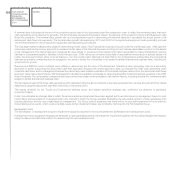 193
193 -
 194
194 -
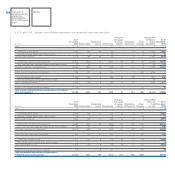 195
195 -
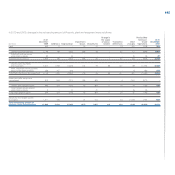 196
196 -
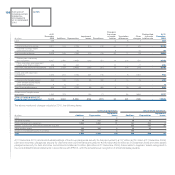 197
197 -
 198
198 -
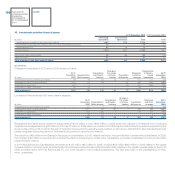 199
199 -
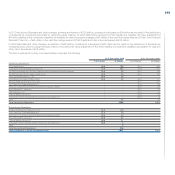 200
200 -
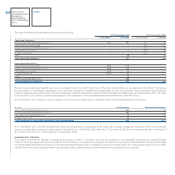 201
201 -
 202
202 -
 203
203 -
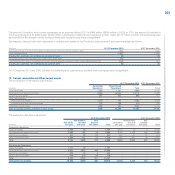 204
204 -
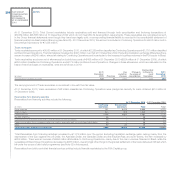 205
205 -
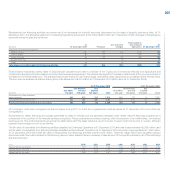 206
206 -
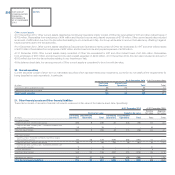 207
207 -
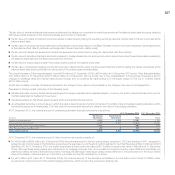 208
208 -
 209
209 -
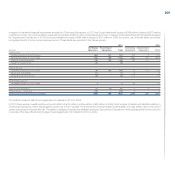 210
210 -
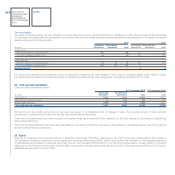 211
211 -
 212
212 -
 213
213 -
 214
214 -
 215
215 -
 216
216 -
 217
217 -
 218
218 -
 219
219 -
 220
220 -
 221
221 -
 222
222 -
 223
223 -
 224
224 -
 225
225 -
 226
226 -
 227
227 -
 228
228 -
 229
229 -
 230
230 -
 231
231 -
 232
232 -
 233
233 -
 234
234 -
 235
235 -
 236
236 -
 237
237 -
 238
238 -
 239
239 -
 240
240 -
 241
241 -
 242
242 -
 243
243 -
 244
244 -
 245
245 -
 246
246 -
 247
247 -
 248
248 -
 249
249 -
 250
250 -
 251
251 -
 252
252 -
 253
253 -
 254
254 -
 255
255 -
 256
256 -
 257
257 -
 258
258 -
 259
259 -
 260
260 -
 261
261 -
 262
262 -
 263
263 -
 264
264 -
 265
265 -
 266
266 -
 267
267 -
 268
268 -
 269
269 -
 270
270 -
 271
271 -
 272
272 -
 273
273 -
 274
274 -
 275
275 -
 276
276 -
 277
277 -
 278
278 -
 279
279 -
 280
280 -
 281
281 -
 282
282 -
 283
283 -
 284
284 -
 285
285 -
 286
286 -
 287
287 -
 288
288 -
 289
289 -
 290
290 -
 291
291 -
 292
292 -
 293
293 -
 294
294 -
 295
295 -
 296
296 -
 297
297 -
 298
298 -
 299
299 -
 300
300 -
 301
301 -
 302
302 -
 303
303 -
 304
304 -
 305
305 -
 306
306 -
 307
307 -
 308
308 -
 309
309 -
 310
310 -
 311
311 -
 312
312 -
 313
313 -
 314
314 -
 315
315 -
 316
316 -
 317
317 -
 318
318 -
 319
319 -
 320
320 -
 321
321 -
 322
322 -
 323
323 -
 324
324 -
 325
325 -
 326
326 -
 327
327 -
 328
328 -
 329
329 -
 330
330 -
 331
331 -
 332
332 -
 333
333 -
 334
334 -
 335
335 -
 336
336 -
 337
337 -
 338
338 -
 339
339 -
 340
340 -
 341
341 -
 342
342 -
 343
343 -
 344
344 -
 345
345 -
 346
346 -
 347
347 -
 348
348 -
 349
349 -
 350
350 -
 351
351 -
 352
352 -
 353
353 -
 354
354 -
 355
355 -
 356
356 -
 357
357 -
 358
358 -
 359
359 -
 360
360 -
 361
361 -
 362
362 -
 363
363 -
 364
364 -
 365
365 -
 366
366 -
 367
367 -
 368
368 -
 369
369 -
 370
370 -
 371
371 -
 372
372 -
 373
373 -
 374
374 -
 375
375 -
 376
376 -
 377
377 -
 378
378 -
 379
379 -
 380
380 -
 381
381 -
 382
382 -
 383
383 -
 384
384 -
 385
385 -
 386
386 -
 387
387 -
 388
388 -
 389
389 -
 390
390 -
 391
391 -
 392
392 -
 393
393 -
 394
394 -
 395
395 -
 396
396 -
 397
397 -
 398
398 -
 399
399 -
 400
400 -
 401
401 -
 402
402
 |
 |

201
In this respect during the second quarter of 2010 Chrysler published its consolidated financial statements for the period from 10 June 2009 (the date on
which Chrysler commenced operations) to 31 December 2009, while its interim financial information for the first nine months of 2010 was published during
the fourth quarter of 2010; both reports have been prepared in accordance with accounting principles generally accepted in the United States of America
(“US GAAP”). The following tables reconcile the loss and members’ deficit as published by Chrysler and the corresponding balances prepared in accordance
with International Financial Reporting Standards (“IFRS”), as adopted by the Fiat Group, for the above-mentioned periods:
01/01- At 30 September 10/06- At 31 December
30/09/2010 (*) 2010 (*) 31/12/2009 2009
Members Members
(€ million) Profit/(loss) Interest Profit/(loss) Interest
Prepared in accordance with US GAAP (344) (2,816) (2,614) (2,936)
Reconciling items on:
Development costs 358 495 132 133
“VEBA Note” and “VEBA Trust’s Contribution” (22) 1,131 1,416 1,756
Pension funds and other post-retirement benefits - 662 - 634
Other minor adjustments 21 24 4 3
Prepared in accordance with IFRS 13 (504) (1,062) (410)
(*) Unaudited.
Main reconciling items refer to:
Development costs: under US GAAP, all development costs are expensed as incurred. Under IFRS, development costs for vehicle project production
are capitalised as intangible assets if the development costs can be measured reliably and the technical and economic feasibility of the product, volumes
and pricing support the view that the development expenditure will generate future economic benefits. Capitalised development costs include direct
and indirect costs that could be directly attributable to the development process, incurred by Chrysler starting from 10 June 2009. These costs are
subsequently amortised on a straight-line basis over the production cycle.
VEBA Note and VEBA Trust’s Contribution: the reconciling item includes differences in the accounting treatment of the financial liability (“VEBA Note”) of
Chrysler to the United Auto Workers’ Retiree Medical Benefits Trust (the “VEBA Trust”) that results from the settlement of the cumulative post-employment
benefits due to certain retirees of the previous Chrysler (“Old CarCo LLC”, now in liquidation). The reconciling item also includes the different valuation of
the VEBA Trust’s contribution to Chrysler equity. Under US GAAP, the settlement of the other post employment benefit obligation was recognised on 1
January 2010, as those accounting principles do not recognise partial settlements. Under IFRS, a partial settlement of the other post employment benefits
obligation was recognised on 10 June 2009. The reconciliation adjustment results from differences in fair value measurement of the VEBA note payable
and equity consideration resulting from different settlement dates on which the valuation was performed. The effect on equity resulting from the different
accounting treatment of the VEBA Note will reduce substantially over time, over the term of the Note, with a corresponding entry to profit or loss for
the period.
Pension funds and other post-retirement benefits: under US GAAP, Chrysler immediately recognises actuarial gains and losses for other post employment
benefits plans which are short-term in nature and for which its obligation is capped. For uncapped plans, Chrysler’s US GAAP accounting policy is to utilise
the 10% corridor approach. Unrealised actuarial gains and losses are recognised in accumulated other comprehensive loss, a separate component of
equity. Under IFRS, the company also applies the corridor approach. However under IFRS, the cumulative actuarial gains and losses unrealised are not
recognised in the balance sheet. Therefore, a reconciliation adjustment is reflected to reverse unrealised actuarial net losses from equity and decrease
the provision.
For completeness, it is noted that having reached one of the predetermined so called Performance Events envisaged in the Chrysler-Fiat strategic alliance
agreements, on 10 January 2011 Fiat received without consideration an additional interest of 5% in Chrysler, and therefore its total holding in Chrysler is
currently equal to 25%. Further details about the Fiat Group’s rights relating to the investment in Chrysler may be found in Note 29.
Non-current financial receivables
At 31 December 2010, non-current financial receivables of €40 million (€44 million at 31 December 2009) wholly classified as Discontinued Operations
were pledged as security for loans.
